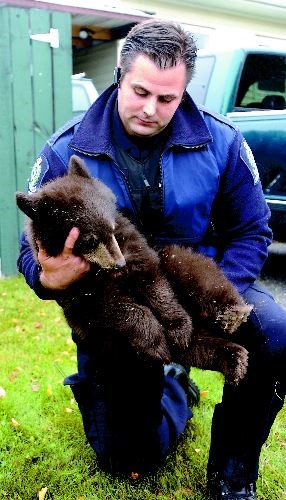The provincial government is encouraging more B.C. residents to use more bear awareness as spring comes into bloom.
The Bear Aware education program is expanding, with funding of $225,000 to bring the program to more communities.
Bear Aware focuses on reducing human-bear conflict in residential neighbourhoods through education, innovation and co-operation.
"Our continued support of the Bear Aware program, without a doubt, has reduced the number of bears that have to be destroyed," said Minster of Environment Terry Lake. "We're making this funding available so that more communities can learn how to keep bears out of their yards and neighbourhoods - and that helps keep bears out of trouble."
Administered by the BC Conservation Foundation, it was an effective tool to decrease human-bear conflicts and the number of bears that have to be destroyed, with 22 communities participating last year.
Prince George is one of the 20 communities actively pursuing Bear Smart status, already achieved by Kamloops, Whistler, Squamish and Lions Bay. In Kamloops, an average of 23 bears were destroyed every year prior to the program being implemented in 2002. That number has now dropped to an average of four bears per year.
In March, the Northern Bear Awareness Society (NBAS) made a presentation to Prince George city council.
According to the local society formed in 2008, the region's bear population was 270 bears within 1,000 square kilometres, or between 20 and 30 bears living within the city. However, in 2010, 88 bears were destroyed in city limits.
"This shows that Prince George acts like a 'sink' for the region, drawing bears in when natural forage is poor," said the society's report to council. It also stated that Prince George has maintained the highest human-bear incidences and bears destroyed in the province every year since 2000.
In order to achieve Bear Smart status, NBAS advocated for changes to the city's bylaws regarding the storage of residential waste.
At the March 5 council meeting, city council unanimously approved an amendment to the garbage collection regulation bylaw restricting residents to putting out their garbage for curbside collection no earlier than 4 a.m. on the collection day.
"Bear Aware teaches people about proper attractant management and that significantly reduces human-bear conflict. This not only helps to preserve public safety, but also reduces the number of bears that conservation officers have to destroy, which is our ultimate goal," said chief conservation officer Lance Sundquist.
The Conservation Officer Service is the primary responder to human-wildlife conflicts where there is a risk to public safety, conservation concerns or where significant property damage has occurred.
Over the winter, the COS received around 37,500 calls regarding human-wildlife conflicts. Over the past five years in the province, an average of 600 black bears were destroyed each year with 93 relocated.
The most effective and natural way to prevent conflicts with bears in urban areas is to put away food attractants such as garbage, bird seed, compost and fruit.
Recent amendments to the Wildlife Act give conservation officers the ability to issue tickets or court appearance notices to deal with people who repeatedly and negligently fail to secure attractants.
For more information about the program, visit www.bearaware.bc.ca.



